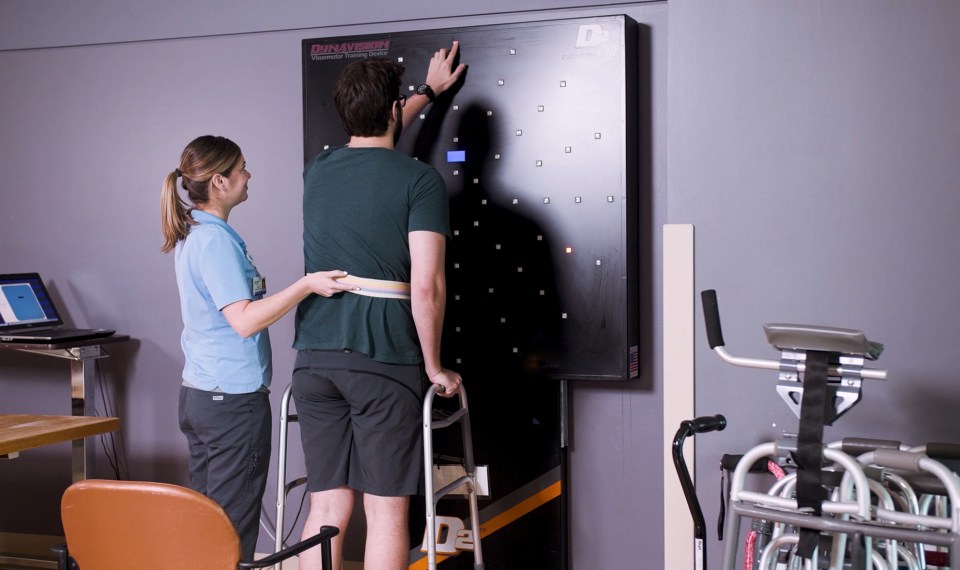Artificial Intelligence will never replace critical thinking, but it can help to inform and support it.
That’s what Encompass Health’s Readmission Prevention Program strives to do. Combining AI and clinical decision-making, the program’s goal is to reduce the risk of a hospital readmission after a patient is discharged from one of the company’s inpatient rehabilitation hospitals.
The algorithm for the program was created using data from more than 400,000 patients who received care at an Encompass Health inpatient rehabilitation hospital. The records were analyzed over a two year-period, and as a result, 40 clinical features that play a significant role in calculating the probability of a hospital readmission after discharge were identified.
If the algorithm identifies the patient at an elevated risk for readmission, clinicians are alerted to take action.
The program has been running in all Encompass Health rehabilitation hospitals since 2020, and with the use of machine learning and artificial intelligence, continues to evolve and improve.
How It Works
The algorithm begins running shortly after a patient’s admission to an Encompass Health rehabilitation hospital. Clinical information is entered into the medical record on a daily basis and incorporated into the algorithm, so the readmission risk evolves over the course of the hospital stay. The risk score is displayed in each patient’s medical record for clinicians. It is also viewable on dashboards that are used to track and trend readmission risk.
“We realized that those 40 clinical factors that contribute to a patient’s risk of readmission are not the only factors that need to be considered when trying to prevent a readmission,” said Dina Walker, Encompass Health’s national director of case management. “The case management staff also assesses socioeconomic factors and social determinants of health.”
Social Determinants of Health & Hospital Readmissions
After a patient leaves the hospital, there are several factors that could elevate their risk of a hospital readmission, and the cause of a readmission may not be related to a patient’s medical condition. Social determinants of health are the nonmedical factors that influence a person’s overall health. They can include anything from access to healthy food to employment status and education level.
As part of the admissions process, Encompass Health patients are given a social determinants of health risk assessment, which is then factored into the patient’s overall readmission risk along with those clinical features.
If the patient’s overall readmission risk is greater than 60%, specific interventions and protocols are put in place for the clinicians to follow.
“In case management, we start assessing needs and planning for discharge on day one. It is extremely helpful to see what’s contributing to the patient’s readmission risk in the patient’s electronic health record, so we can act on what we see and put interventions into place,” Walker said. “We tell everyone during readmission prevention training that the algorithm does not replace good clinical judgement and critical thinking. It just points out certain clinical information like medications, documented assessments or changes in vital signs that may or may not need to be addressed prior to discharge; the clinicians decide what to do from there.”
Another Clinical Support Tool
Over a year before rolling out the readmission prevention program company-wide, it was piloted in several Encompass Health rehabilitation hospitals. From lessons learned during the pilot, a Readmission Prevention Playbook was developed.
“As with all data-driven models, the Readmission Prevention Program is an adjunct tool for our clinicians to use and is not meant to substitute for sound clinical judgement,” said Dr. Lisa Charbonneau, chief medical officer. “This playbook is an enhancement to the tools our clinicians already have to help our patients get home and stay home after their rehabilitation stay has ended.”
The playbook outlines interventions that should take place during the inpatient rehabilitation stay as well as those critical days after discharge, such as connecting with the patient’s home health agency or making sure the patient has an appointment with their primary care physician.
The playbook identifies and focuses on four pillars of readmission prevention:
- Medication management: Ensure patients are given their medications in a timely manner after discharge and that they understand their meds and usage.
- Patient-centered health records: Ensure that patient’s primary care physician has access to proper documentation and records to understand the patients care in a timely manner.
- Follow-ups with providers and specialists: Case managers work with the high-risk patients to ensure these appointments are secured shortly after discharge.
- Patient knowledge/red flags: Many high-risk readmission patients are also managing chronic conditions such as COPD and CHF. Clinicians work with them to ensure they know how to properly manage these conditions at home or that their caregiver does.
Another Effort to Improve Patient Care, Reduce Readmissions
The readmission risk algorithm and prevention program is yet another tool developed by Encompass Health to help support and inform clinical decision-making. Because all Encompass Health rehabilitation hospitals adopted an EMR more than a decade ago, there is a vast amount of electronic clinical data available to develop predictive models in the inpatient rehabilitation setting.
Encompass Health developed its first predictive model, REACT, in 2017; this program focuses on preventing an acute care transfer during a rehabilitation hospital stay.
The company also rolled out a fall prevention model specific to the inpatient rehabilitation setting, where fall risk differs from that of an acute care setting. As with the readmission prevention program, the fall model uses AI to determine a patient’s risk and then providers use clinical decision-making to reduce that risk.
The content of this site is for informational purposes only and should not be taken as professional medical advice. Always seek the advice of your physician or other qualified healthcare provider with any questions you may have regarding any medical conditions or treatments.



